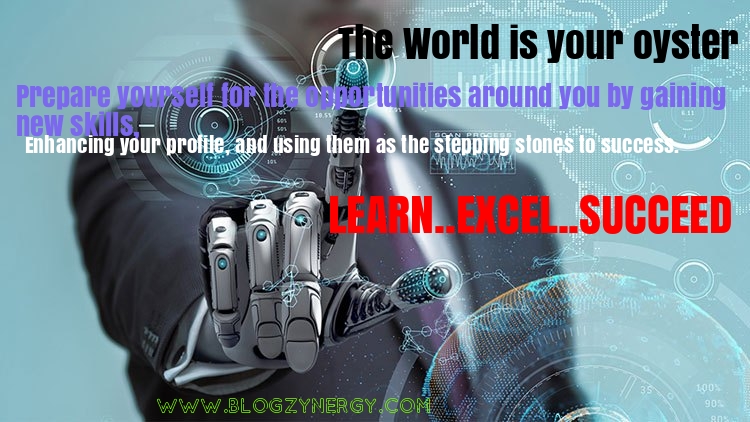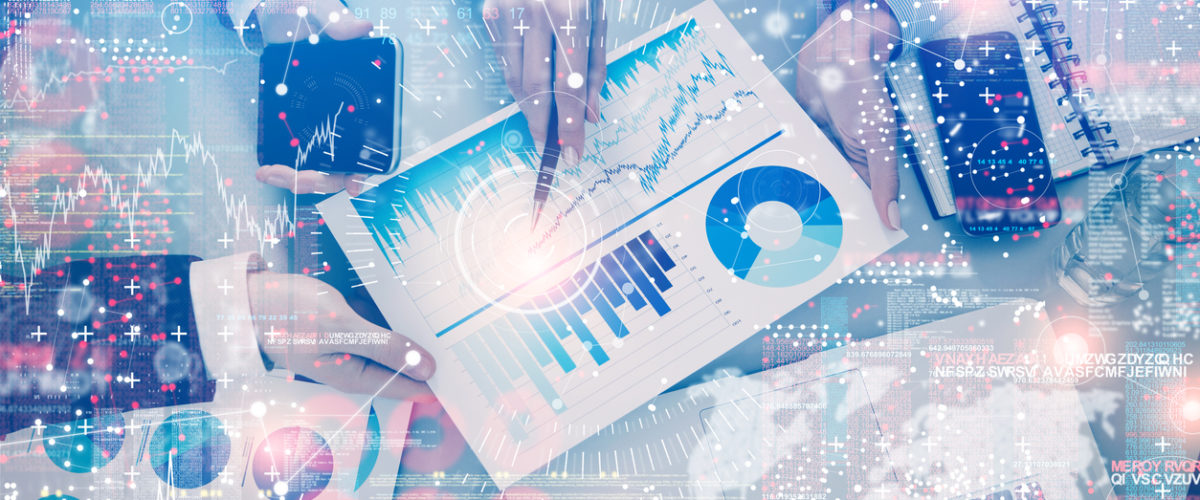
Author: Danny Jibodh
Does/will artificial intelligence displace human contact?
The way in which we have human contact with each other is changing. The qualitative growth spurt of artificially intelligent systems has an impact on multiple domains, including the way in which we will communicate in the future. This communication is not only from person to person, but also from person to machine and vice versa. I see 5 important trends in this landscape. I have listed them for you in this article.
1. More digitization
The first trend is that we will increasingly digitize contact. You already saw that with the rise of social media and smartphones. That line continues. Communicating quickly and asynchronously is convenient, easy and delivers enormous efficiency . We will communicate even more via digital channels.
In addition, we will also outsource tasks to artificially intelligent software systems. These are, for example, e-mail systems that respond to standard e-mail messages on your behalf. And for example Google Duplex-like systems , which can call you on a restaurant to make a reservation.
2. Man-Machine communication
This is how you optimally use social media monitoring [training]
Learn in this training how to get action-oriented insights and gauge the impact of campaigns.We as people are also going to communicate more with artificially intelligent software around us. In many different ways. For example, more and more of the predictable part of our human interaction is being taken over by artificially intelligent systems.
In short: where conversations are still taking place via a decision tree (a standard structure), artificially intelligent assistants can increasingly take over. Think of an intake interview that almost always follows the same pattern or a standardized registration for an event. Conversation is increasingly becoming the domain of artificially intelligent software.
Not unimportant: human voices are also easier to imitate (see the video below). In the future, artificial voices can no longer be distinguished from real ones. Then an AI system takes over part of a conversation. You already notice that when you call a call center. The first three questions generally reach you via a computer voice. This will be expanded more and more in the future.
And I also say nothing new when I claim that in the future we will increasingly communicate with digital assistants such as Alexa, Siri and Google Home. These systems become smarter and can evoke empathy and interest better in their responses. Some people will experience feelings of friendship with their digital assistant in the future, because they are always interested, always available and never seek conflict or give nasty feedback. For some people this contact will be sufficient because they sometimes find human contact unpleasant. Many experience stress and are easily hurt or worry about it for a long time afterwards. An AI system can be more pleasant for them.
3. Human contact as a luxury product
Because we are increasingly digitizing interaction and communication, human contact is becoming scarce. That will be a luxury product, certainly in contact with companies. After all, what you can digitize becomes cheaper. And everything that cannot be digitized therefore has value. Human contact, intimacy, attention, concentration, face-to-face conversations. Again: everything that cannot be digitized and scaled has value. And because it will be a luxury product, it will no longer be available to everyone.
I do sometimes wonder: if human contact is increasingly being digitized and in many cases is being cut away, do we not deprive ourselves and the younger generation in particular of the training material for developing and maintaining social skills? On the contrary, do we learn to expand and value our social skills in the physical world, in the conversation at the checkout, in the store and at the station?
4. Insights with voice analytics
If we look at human contact and communication through the lens of artificial intelligence, we see under the radar that companies (through our ancient drive to communicate continuously) can collect huge amounts of data about our human needs and behavior. As a result, they understand better who we are, what we do, why we do it, what we find important and how we feel.
Certainly if you consider that we are giving more and more voice commands to the devices around us, that our voice is being recorded at call centers to train machines and that companies are using our recorded voice to unleash artificially intelligent analyzes. Then a new dimension is added to what companies know about us: speech analysis.
They record our voice and analyze the speed of speech, volume, pauses, stress, possibly dialect and vocabulary. Then they know how to distil hidden information about our behavior, identity, emotions, appearance and in the future our mental health.
That may seem like the future, but it certainly isn’t. Basic emotions such as joy, anger, sadness or fear can easily be detected by the larger software vendors in this area. That which human ears cannot hear is audible for artificially intelligent software. And these systems can carry out the analyzes with great precision.
Risks
One of the risks is that this type of voice analysis software is used for telephone applications, and that it can then find out whether you are overweight or depressed, for example. Or imagine that you call the roadside assistance when your car breaks down and that the software then registers that you have drunk alcohol. Do we get a box on the table during a job interview, police interview or performance interview that measures our emotions and nervousness?
That is not my only concern. Sometimes I also worry that we will replace really important human contact with interaction with artificially intelligent software. In this context, by the way, this is the last, fifth development that I want to emphasize.
5. Artificial contact
For example, if Alexa gets more and more opportunities and responds more and more extensively and sometimes with more empathy, how is that going to affect our human interaction? Are we going to give the lonely seniors a digital emergency phone that fulfills their need for contact? Not unthinkable, by the way: Alexa can already read the news, tell sports results, come up with riddles, puzzle together, tell a story and make jokes. Are we, just as we sometimes give children a smartphone or iPad to have our hands free, do the same with the senior citizen part of our society? Such an experiment is already underway in South Korea .
And what about the friendship apps, in which artificially intelligent software is built in at the back? Chat apps such as Replika with which you can talk and promise your digital friendship. 24 hours a day, never rejecting, always listening. No matter how often you want to talk about your broken relationship, deceased partner or dismissal, you never get the feeling that you are a nag …Again, for part of our society, artificial intelligence might be a good solution to all the stress and discomfort that occurs during the uncomfortable process of human contact. Or should people not be given the opportunity to isolate themselves in a surrogate form of communication? Is it precisely in the inconvenience the opportunity to learn and thus discover the real key of happiness? (In my opinion: being able to embrace discomfort as an essential part of our human life.)
Consequences for love
Another thing: the Tinder algorithms look for the most suitable partner for us. We only have to open our phone and a new friend is in principle available. Does that lead to us accepting less discomfort in a relationship because a new friend is literally within reach? That Tinder offers an escape route when things are not going well in a relationship? Do dating apps give us so much choice that we automatically set the bar unreal for a partner and therefore almost always remain unhappy ? We continue to doubt our current relationships for longer, because there is always a chance that a nicer partner with a swipecan be found and accessed via an artificially intelligent dating app? Is the accessible availability of hundreds of potential new partners a blessing or a curse?
The real future of human contact
-It remains an interesting domain: the future of human contact and communication viewed through the lens of artificial intelligence. What I think we should not forget in this discussion is how unique we are as humans. We can make real contact with each other because we have a soul, a form of consciousness. Machines do not have that and I think they will never get it. We connect with our humanity, our consciousness, our heart and our soul. And as far as I am concerned, there lies the real future of human contact, in the midst of a world that is increasingly dominated by artificially intelligent systems.
Marketing is like popcorn
Whether you do online or offline marketing, marketing is marketing. That is for online marketers who think online everything is important to know. Digital marketing is important but it remains marketing in essence. This morning I was thinking how I could easily explain the different stages that a customer went through from unknown to customer. And I came to the conclusion that marketing is like popcorn! Please read why this is a good comparison.
In marketing you can speak roughly about 3 different groups.
- People who have never heard of your product or service
- People who have already heard of you but are not yet a customer
- Customers
You can divide those groups into a cold, warm and hot audience.
- Cold – People who have never heard of your product or service
- Warm – People who have already heard of you but are not yet a customer
- Hot – Customers
And that is perfect to see when making Popcorn 🙂
- Cold – The corn that is not yet in the pan – People who have never heard of your product or service
- Warm – Corn in the pan – People who have already heard of you but are not yet a customer
- Hot – The Popcorn! – Customers
Occasionally you have to do campaigns that reach people who have never heard of you, add new corn.
You can warm up the corn by keeping people regularly informed, remarketing campaigns and e-mail marketing can be used here if necessary. Corn is not immediately ready to “pop” and you do not know exactly when the corn will pop and that is no different for potential customers. Patience and keep warming up is the message there!
The more corn you can put in your pan, the more customers can “pop up” as long as they are properly heated, cold corn will rarely pop.
So remember: Marketing is like popcorn! 🙂
Let 2020 be your best Marketing Year.
HAPPY NEW YEAR

Five interesting developments in tech for 2020
Change is a constant factor in the fast-moving world of technology. New products and trends come and go so fast that it is difficult to keep up with, but if an organization wants to avoid the risk of falling behind, it is a must to keep abreast of current developments.

1. Super-fast technology at your fingertips At
speeds up to 100 times higher than its predecessor, 5G will be the second largest evolution in the telecom industry. It promises super-fast download speeds and a lower latency. However, the arrival of 5G also means that companies must prepare for the implementation of this technology both in the workplace and beyond.
Smartphones bring the possibilities of 5G directly within reach. It is therefore expected that we can expect a doubling when it comes to the smartphone as a favorite device in the workplace. And as the adaptation and value of flexible devices such as the smartphone increase, so too will the demand for products to better protect these devices.
Organizations will have to adapt the workplace and work floor to the modern needs of employees in order to facilitate a seamless experience for various devices for them.
2. Security remains a priority
2019 After the introduction of the GDPR in 2018, the focus was on data protection. This also brought the debate about cyber security to the forefront, encouraging both organizations and consumers to pay more attention to their personal data. Yet cyber security is often limited to a silo, separate from the physical security of data, while the two are nevertheless inextricably linked.
To illustrate, all you have to do is look at the example of Heathrow Airport in the UK. They received a fine of no less than 120,000 pounds last October after a staff member lost a USB stick that was later found by a citizen. This example shows that a seemingly small error can have large and expensive consequences. A lost USB stick or lost smartphone can already be enough to expose the confidential data of an organization. In 2020, the focus on combining cyber and physical security will grow.
3. Sustainability is gaining importance
In the past year we have seen enough examples of greenwashing and sustainability commitments that have not been met. However, sustainability will continue to gain in importance in 2020. The changing wishes of customers require companies to take action in all different areas.
Resellers and cooperation partners demand transparency in the field of sustainability from their suppliers. After all, every organization will set high standards for its environmental policy across the board.
As a small organization, it is easier to set up a short supply chain for sustainability, but as the size of the company grows, it can become difficult to keep all levels green. It is the responsibility of the organization to encourage this change and to be transparent in this. After all, customers appreciate and expect this from organizations. Sustainability is no longer just a USP, it will become a requirement in 2020.
4. Meeting the needs of the next generation
Flexible and remote work plays an essential role in 2020. Gen Z is entering the workplace and the arrival of this new generation will also change the role of technology. This new generation will incorporate the available technologies and policies employers pursue in their choice to get started. Being connected and flexible therefore becomes essential in recruiting the right talent. Think of linked functionalities on the shop floor, companies need hardware that has cloud capability and match the pace of the changing work ecosystem. This way, the right docking station can easily let an employee synchronize his devices and gadgets. Whereas a laptop replaced the fixed PC in ease of use at the time, the docking station will make a desk full of cables superfluous.
5. The role of the IT supplier is changing
Because both large and small organizations are turning to leaner models and processes to achieve optimum business efficiency, the amount of time and budget available for training and development can be limited. If fewer people are needed to do more, this means that companies will increasingly rely on their IT suppliers to train and guide them with the most suitable technology for integration into and outside the workplace. Companies that purchase IT devices and accessories for the workplace face an overwhelming possibility of choices that can ultimately be quite confusing.
In 2020 we will increasingly see existing IT suppliers as an extension of the organization. They provide valuable advice and help companies determine how technology can best add value to their activities.
Ways you clear your aura of negative energy!
We all brush our teeth every day, wash our hands, and bathe our bodies, but not many of us know how to keep yourself energetically clean. If we have a balanced lifestyle, then this will happen automatically. But if we are overworked, malnourished, or have a sleep deprivation , we may neglect our energetic hygiene.

Why is this important? If we look at our bodies under a powerful microscope, we see that we are essentially made up of atoms – and atoms are energy. The energy of an organism is not limited only to this physical form, but also spreads outward, in an egg form. We call that egg-shaped energy the aura and can be seen with Kirlian photography . Just like with our body, we have to take good care of the aura to stay optimally healthy.
When it is time to clear your aura, you can feel the following:
- Listlessness
- Depression
- Fear
- A ‘ heavy ‘ feeling on you or around you
By cleansing your aura daily (ideally morning and evening), you rid yourself of the negative energies that you pick up from your environment or the people around you.
By ‘negativity’ I mean heavy emotions from others, daily stress, streams of thought, strings, and other types of energetic phenomena that suck up our life energy. It is important to realize that we are meant to experience life, along with all the great opportunities that come with it. ‘Polluting’ your aura through everyday experiences is really good … As long as you clear it again!
Below are 6 ways that I find effective in clearing my aura of negative energy:
Working with crystal
Black tourmaline is one of my favorite crystals to use; it not only cleans the aura from negativity, but if you wear it as a pendant or hold it somewhere else on your body, it protects your aura by repelling unwanted energy all day long. Some other crystals that are good at purifying the aura are fire agate, black kyanite, smoked quartz, and labradorite .
Sage or ‘smudge’
The smoke from burning sage has been used for years to purify your aura or environment from unwanted energies. It is available in most spiritual stores. It has a powerful purifying effect and after use on my aura or around my house I always feel relaxed and renewed.
Essential oils
My favorite essential oils for purifying my aura are bergamot, cedar wood and orange. Add a few drops of these oils to a carrier oil and apply it directly to your skin or use it with an evaporator to purify both your aura and your home / office. These essential oils are good for purifying, priming and stimulating energy.
Sea salt baths
Salts have been traditionally known for centuries for their purifying and balancing effects on the body. If you do not live near the sea, taking a bath in Epsom salt or salt from the Dead Sea can have enormous relief and purification after a stressful day. Sea salt baths can also help with skin conditions such as psoriasis, eczema and helps relieve muscle pain. Swimming or bathing in salt water purifies, refreshes and recharges your energetic body.
Enjoy nature
Surrounding yourself with the elements is perhaps the most powerful way to purify your energetic body. Just being outside already has positive effects, but the best way to purify and ground yourself is to completely immerse yourself in nature. Gardening , walking in the woods , sitting by a lake or a campfire are all powerful ways to approach nature and rid your aura of negative energy.

Use an Auraspray
An Auraspray for especially works grounding and protective and it creates space around you. It raises, as it were, the vibration in your energy field (aura), making you no longer susceptible to influences from others. The spray is most commonly used prior to situations where you meet / meet many people, such as in a city, meetings, birthdays, etc .. It is a nice tool until you can keep your own energy management in order.
Hopefully these tips are useful for you. I am very curious about your favorite way to purify your aura, so leave a message below!
Tomorrow we are starting a brand new year 2020.Start it good with a clean and powered AURA. Happy New Year.

Don’t forget Your End of the Year SEX and continue it in 2020 and beyond

Getting occupied doesn’t need to be saved for a considerable length of time. Utilize these 7 incredible reasons to hit the sheets each night of the week. Are you with me…Great then read further into the hot stuff.
You appreciate getting it on, yet of late, there’s been much less sex (and significantly all the more napping) going on under your spreads. What’s happening? “Sex regularly turns out to be simply one more thing on our jam-pressed schedules, and numerous couples are battling to shield it from staying at the base,” says Carole Lieberman, MD, MPH, a specialist in Beverly Slopes, California.
In any case, there are a lot of motivations to make sex a need once more, she says. Getting occupied has been appeared to ease pressure, keep connections solid, support temperament, improve rest, and a mess progressively (also, it feels better!).
From your Monday night de-stressor to a week’s end wind-down, here are seven incredible motivations to get it on throughout the following week.







The video trends for 2020: you can expect this
Virtual conferences, video search and accessibility: I inform you of the video trends that you can expect in 2020!
1. Mobile first
An eMarket study shows that almost 80 percent of videos are viewed on phones. So on small, vertical screens. In 2020 we will see even more dedicated vertical and square content, videos that have been created entirely for the vertical viewing experience.
2. Video in education
E-learning, micro learning, training via Instagram Stories etc, via daily e-mails, or via a private LinkedIn group: online learning is completely up and running. And of course video cannot be missing. From tutorials to bake an egg to internal training for staff, video in e-learning and micro-learning is booming .
3. Search in videos
You probably search for videos regularly, but do you ever search in a video? And I do not mean scrolling forward, but focused search by typing. Imagine watching an interesting video about ukulele, but you have a specific practical question: how to tune your ukulele. Simply type in your search term and you will be referred to the exact moment in the video you are looking for. This search technology is limited available on YouTube (via plug-ins), and we will see more as speech recognition technology develops better and better.
4. 1: 1 video
I predicted this as a trend for 2019, and I think we can expect even more personal, one-to-one videos in 2020. These are business videos that are made specifically for 1 person. Think of simple authentic videos that are filmed with the smartphone, for example from doctor to patient, or from seller to customer. Tools such as HubSpot are already responding to this.
5. Accessible video
Making video accessible is not so much one of the video trends, but something that many companies will hopefully deal with in 2020. Think of subtitling and translation: things that I think will get sharper laws and regulations. And that is no more than logical. Your video message must be understandable to anyone who wants to see and hear it.
6. Virtual conferences and presentations
A trend that I personally look forward to: virtual conferences. Wistia was one of the first to organize a virtual conference ( CouchCon ), with presentations from 13 speakers, attracting a large international audience. I am curious what 2020 has in store in this area.
7. VR
One in 10 marketers uses virtual reality, and I assume that this will only increase in 2020. With VR it is possible to walk through a designed building, see shoes on your feet that you have not yet bought, prepare a complex operation, or practice a presentation in front of a large room. I am very curious what we will see in 2020!
What are your predictions in the field of video marketing for 2020? I am very curious about your ideas about the video trends, leave a comment.
MERRY CHRISTMAS
GET GOALS DONE SMARTER
From old to new routines
ARE YOU WITH ME… JUST READ FURTHER…

With the arrival of new individuals, organizations can view existing processes and routines differently. This creates space for the organization to adapt to changes.
Continuous improvement as a routine
Employees are increasingly asking employers to renew their work. They are becoming more assertive and also opting for alternatives if they don’t like it. Moreover, more and more organizations are seeing that not all old ways of working still serve them. As a result, organizations face the challenge of operating more efficiently and flexibly. With the arrival of new technologies, services and products, it is also possible and better needed to improve. Motivated employees who actively evaluate and improve their work processes increase the competitiveness of the organization. The condition here is that continuous improvement becomes routine in the workplace.
Constant change
To be able to keep innovating constantly, the right culture and infrastructure in an organization is required. The management of employees by management is changing. Employees are given more room to excel themselves and teams are put together more to innovate together. It’s about the right balance in this. The framework must therefore be very clear. Both the output that is requested from employees, the people who can participate in innovation, and the time that is available for it. This requires a rigorous break with routines.
To break through routine, it is important to look with the employees at how we approach work and where improvements can be made. Activity Based Working has proven to be a very effective tool for this. Some examples are;
1. Increase the control space
Work, where, when and how you want. For this it is important that the employee has the same things at home as at the office. There is a need to digitize . A clear framework about what is allowed for the individual in collaboration with his colleagues and clarity about his / her output. This not only helps to break through routines, but also to greatly increase employee productivity and well-being.
2. Improve the office
How important is the office space with permanent workplaces in 2019? Does there still have to be an office or does that serve as focus space? Is there a large room where everyone sits together or are there many separate rooms where you can call or hold meetings via video ? It is important for employers to see whether or not they should invest in the office building in the future or in other options. By talking to employees about their routines and discovering together what the new way of working looks like, you gain new insights. Based on those insights, you can create a fantastic functional office building where people feel more at home, more satisfied and proud of their employer.
3. The performance of employees
Performance interviews are often held in a separate room, in a static position. The employee sits opposite the employer, just as with the application at the start. This immediately creates a certain atmosphere. This has an effect on the course of the conversation. If employees get more daily control and there is more room for feedback. Then functioning is no longer a heavy subject. It’s a conversation that everyone knows what’s coming. That is why it is best to also conduct this in a transparent room or in the open air. The space, but especially the openness, make a substantial difference.
Giving employees space and, where necessary, guiding them makes them feel heard and connected to the organization. Breaking routines, giving space to people and having an open work culture are only benefits for many organizations. And Activity Based Working is a perfect tool to take a big step in that. The success of every organization is hidden in the daily routine. So don’t get stuck in old habits.
STOP EATING ONLY CHAMPION CHOWMEIN ONLY. TRY NEW THINGS STEADY STEADY.







